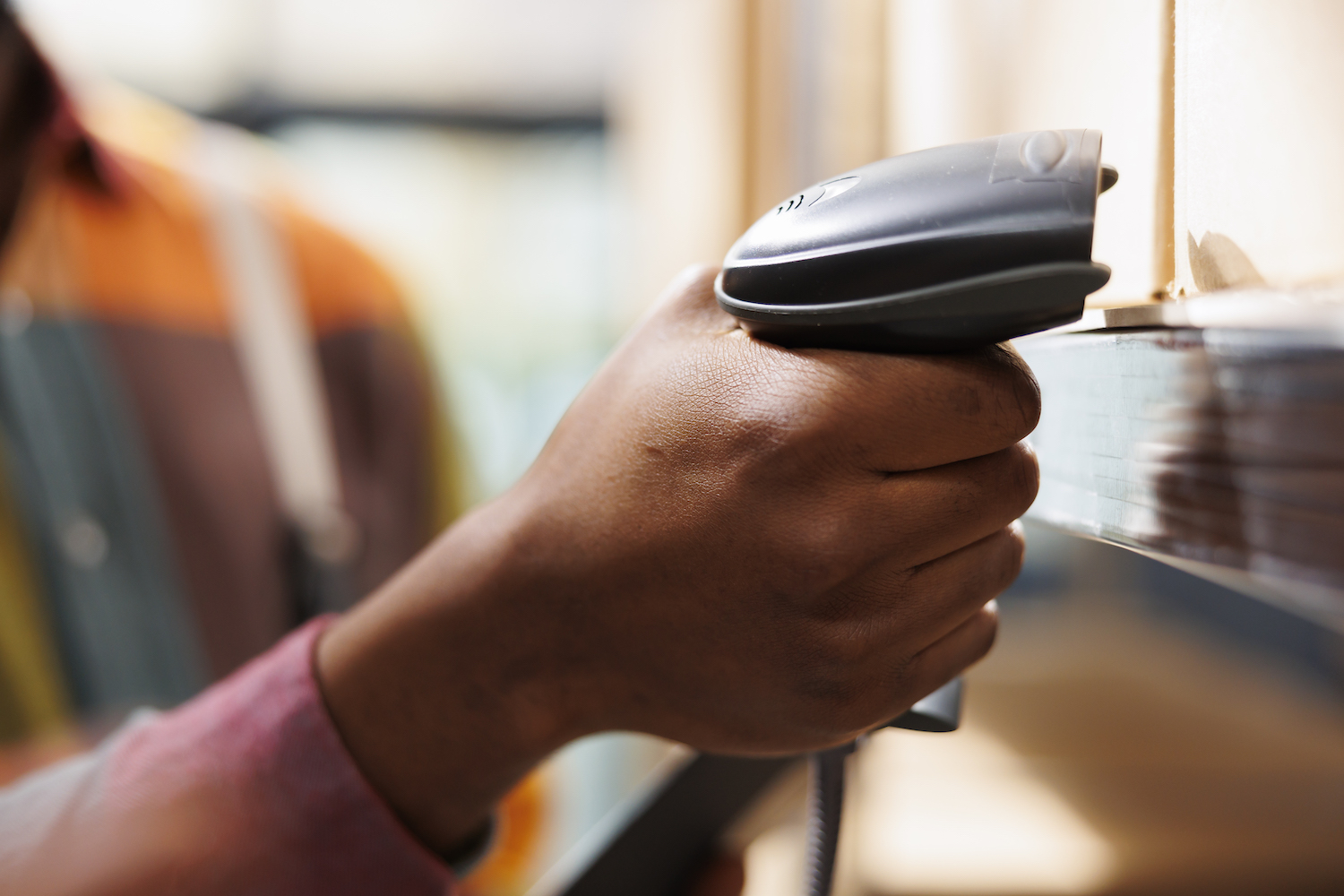QR vs. barcode: which is right for your inventory?
Love it or hate it, the QR code can offer significant advantages over the barcode in managing complex information tracking, which makes it a good candidate to consider in inventory management.

Ioana Neamt

Let’s talk labels. We know that the first rule of labels is that they are for things, not for people. And that the second rule of labels is that we are always supposed to read them very carefully. Labeling technology has been an essential element of successful inventory management, probably for as long as humans have had things.
The purpose of a label has always been either to provide information about a thing, attest to its authenticity, or both. But, with the advent of industrialization and the speed that it brought into the world, labels needed to be more: they needed to be standardized and quickly readable.
Enter the humble and familiar barcode and the higher-complexity varieties that followed in its tracks.
While modern labels are all, in essence, very condensed ways of delivering information via specialized scanners, it is certainly worth exploring how barcodes and QR codes compare.
The barcode
There might still be a few things you don’t know about the label that need no introduction. Did you know it was invented in the U.S. in the 1950s and based on the Morse code? That the earliest barcode designs were circular and looked like tree rings?
What are the main types of barcodes?
- One-dimensional linear barcodes
This is the most common type you are likely to see — so common for so long that it has achieved the cultural status of questionable tattoo choice.
However, as simple as it looks, this parallel, vertical black and white line arrangement has proven quite versatile. Several types of linear barcodes are now used across a wide range of industries, depending on what information and how much of it needs to be encoded.
- Two-dimensional linear barcodes
These represent a step up from the plain vertical line variety and were adapted to encode more complex information. Two-dimensional linear barcodes can appear as a rectangular combination of vertical lines and dots (usually larger than plain barcodes) or as square matrices of squares and dots (also referred to as data matrix codes, can be printed quite small and encode a lot of information).
Common applications of barcodes
As it is the most common type of label, you’ll see barcodes in almost every industry. In retail, manufacturing, and logistics, barcodes serve to:
- Identify products, track inventory levels, and facilitate transactions
- Track the movement of products through a manufacturing process
- Identify shipments and track goods through the supply chain.
Other uses include:
- Identifying medications, tracking patient prescriptions, and preventing medication errors in pharma uses
- Identifying tickets, tracking attendance, and preventing fraud in live entertainment
- Identifying books and other published materials and tracking circulation records in publishing
- Automated sorting, tracking, and distribution of luggage in transportation.
Advantages of using the barcode
- Accuracy — The scanning error rate for barcodes is below 1%, and read failures tend to happen for external reasons, such as the reading scanner not being positioned correctly to read the code or if the code is obstructed.
- Speed — Information delivered via barcode encoding is read and recorded significantly faster than traditional labeling methods and manual data entry, which makes it essential for high-volume, high-speed inventory tracking and management.
- Standardization — The barcode can store alphanumeric characters, decimal numbers, and special characters. This has made it easy to adopt as a worldwide standard, which has contributed greatly to streamlining global supply chains and improving overall efficiency.
Disadvantages of using the barcode
- Costs — While it is relatively inexpensive to implement and maintain barcodes, the reading scanner technology can be rather costly, depending on the complexity of the application.
- Limited capacity — Barcodes can only store a limited amount of data, which may not work for you if your application requires higher complexity.
- Security — Barcodes are more susceptible to being hacked or counterfeited, which may lead you to deal with unauthorized access to information or goods.

The QR code
The QR code (quick response code) seems to have lost its brief hold over the restaurant menu. However, there’s no denying there is more to this labeling technology than meets the eye.
Is there more than one type of QR code?
At first sight, the quick response code is very similar to a data matrix barcode in that they are both square-shaped matrices of squares and dots. However, the QR code can also vary depending on the information stored and the complexity of its application.
The kind of QR codes most frequently used in inventory management are:
- Static — The basic and most common type of QR code, which can store up to about 4,300 characters
- Micro — These are smaller than standard QR codes and can store up to about 30 characters
- Dynamic — This QR code can store more than 2 million characters and can be updated for reuse when the information it stores changes.
Applications of QR codes in inventory management
- In inventory management, you are most likely to come across static QR codes. The capacity this type provides can store enough information to track essential inventory data, such as product name, SKU, and quantity.
- Micro QR codes are a good choice for when space is limited, such as on product labels or packaging.
- Dynamic QR codes can be used when some product information changes frequently or to trigger an action regarding the product, such as adding it to a list or an order.
Advantages of using QR codes
- Durability — While barcode readability decreases with wear and tear, quick response codes use an error-correction system that allows them to work (to be read correctly) even if smudged or scratched.
- Ease of use — A relatively inexpensive solution that does not require specialized equipment or software and can be easily created using freely available QR code generators. As they are widely supported by smartphones and tablets, QR codes are easily accessible to a wide range of customers.
- Security — QR codes can be encrypted to protect even sensitive information like passwords and card numbers.
Disadvantages of using QR codes
- Compatibility — As quick response codes are relatively new to the party, they require that equally new technology be used to scan them. Therefore, you would need to update older and less sophisticated devices.
- Limited adoption — Although they have become a more familiar form of label, QR codes are not yet as universally recognized as barcodes. This can limit the effectiveness of your reach for applications where you employ QR codes.
- Medium constraints — While the QR code error-correction system makes up for up to 30% of surface damage, optimal reading results do require certain printing conditions, such as high contrast, good light, and a flat surface.

Scan your way to efficiency with Katana
Labels themselves have taken many forms, from ancient clay or stone tablets inscribed with the name, quality, and origin of an item to pottery and metal labels stamped with the manufacturer’s name or logo to the textile, leather, adhesive, or laser-printed labels of later times.
Katana cloud inventory software is a scalable platform with a wide variety of features to streamline your inventory management processes and boost your productivity. Katana offers:
- Multilocation inventory tracking
- Barcode and QR code scanning
- Serial number, batch number, and expiry date tracking
- Tracking of bin locations
With these features, Katana gives you full inventory control for more efficient stork management, reducing errors and easily identifying materials and items.
With good accuracy of your inventory levels, you can schedule production and plan for customer demand and get full traceability throughout your operations using easily scannable barcodes or QR codes.

Ioana Neamt
Table of contents
Get inventory trends, news, and tips every month
Get visibility over your sales and stock
Wave goodbye to uncertainty with Katana Cloud Inventory — AI-powered for total inventory control